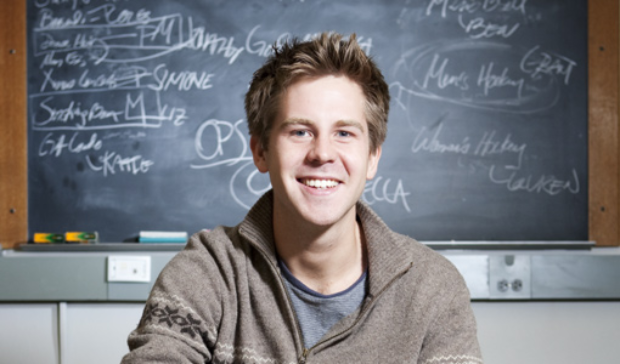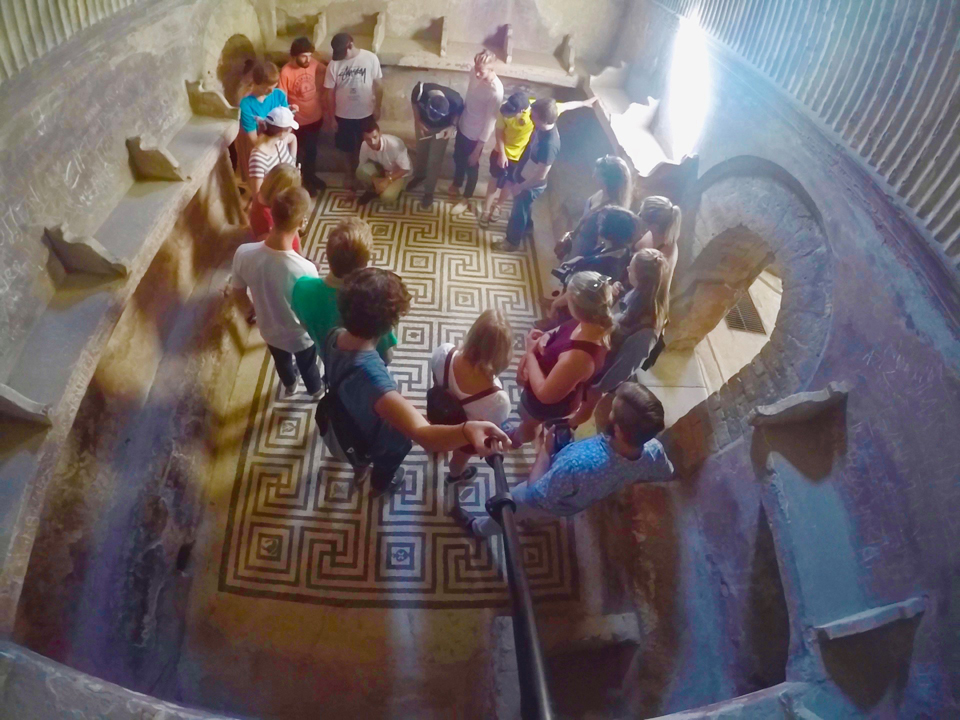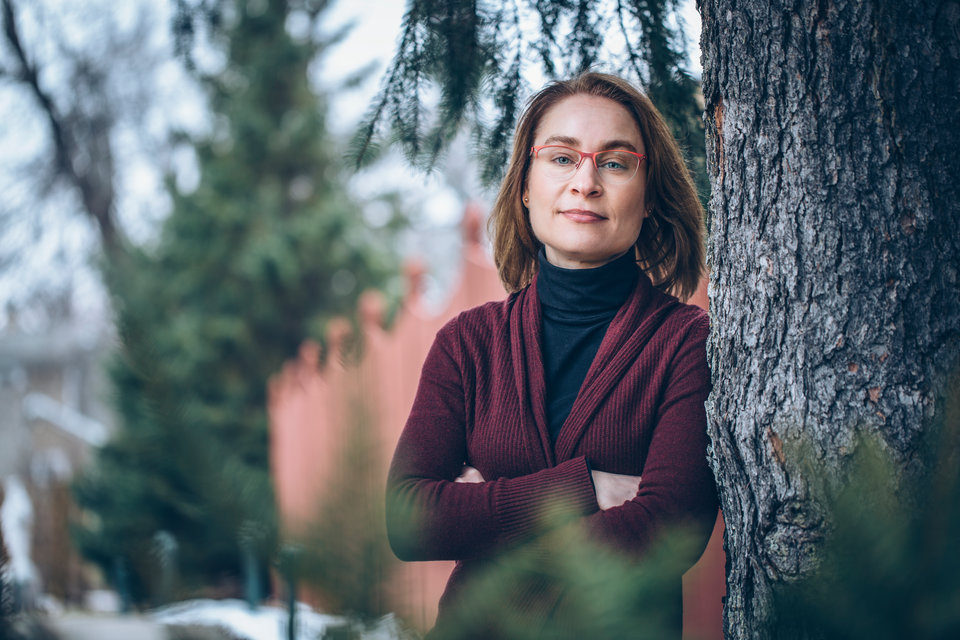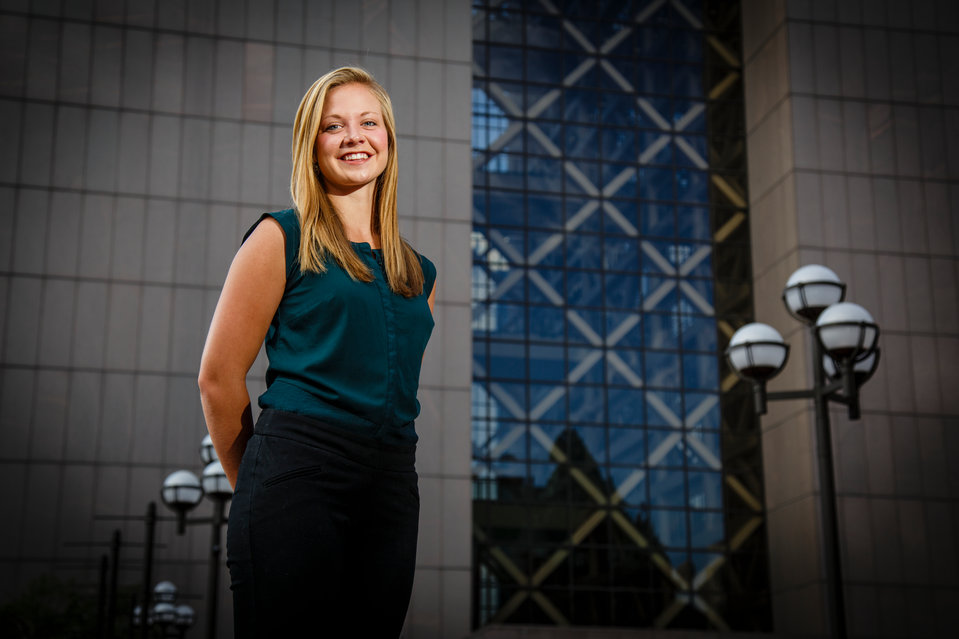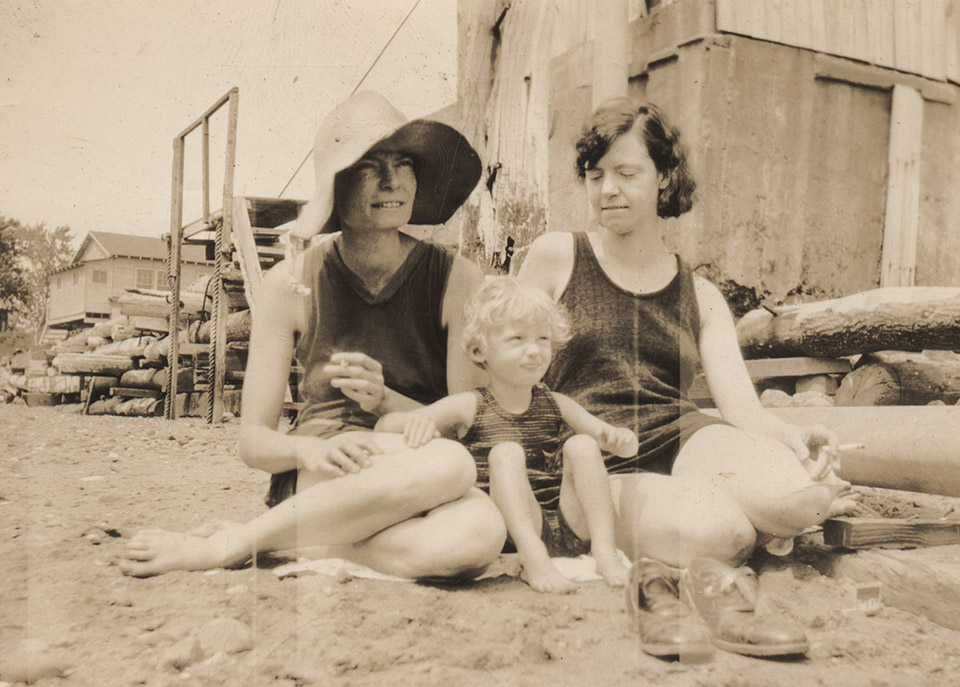Like many broadcast journalism students before him, St. Thomas senior Chris Hansen has practiced his craft by reporting and shooting video news stories. But unlike his predecessors, Hansen has been producing his video stories for the campus newspaper. As one of the first two videographers to work for The Aquin, Hansen typifies a growing multimedia emphasis in the Communication and Journalism Department (COJO).
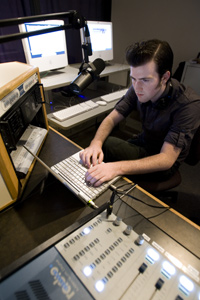 Because the mass media – including newspapers, television and radio – are changing every day, college students are challenged to be prepared for careers in the communication and journalism professions. So this year, The Aquin student newspaper, “Campus Scope” television news magazine and KUST radio are pooling their resources to give students new opportunities to develop the multimedia skills entry-level professionals need.
Because the mass media – including newspapers, television and radio – are changing every day, college students are challenged to be prepared for careers in the communication and journalism professions. So this year, The Aquin student newspaper, “Campus Scope” television news magazine and KUST radio are pooling their resources to give students new opportunities to develop the multimedia skills entry-level professionals need.
“We’re trying to foster that collaboration now more than ever before, because that’s what is happening in the real world,” said Dr. Kris Bunton, professor and chair of the COJO Department. “We’re not fully there yet, but we’re working on it.”
The first major step to the multiphase goal of unifying the student media organizations was relocating The Aquin, “Campus Scope” and KUST radio. KUST radio has a new studio space on the lower level of O’Shaughnessy Educational Center, adjacent to the TV studio where “Campus Scope” is produced. The Aquin and “Campus Scope” staff members moved to a joint space halfway along the tunnel between the John R. Roach Center for the Liberal Arts and O’Shaughnessy-Frey Library Center. The new media center is just steps away from the TV and radio studios.
“Getting the student media staffs into a space where they would more often see each other and interact was an important way to help them begin thinking about collaborating on media content,” Bunton said.
A second and even more important step came in the fall 2008 semester, when “Campus Scope” and The Aquin began collaborating on multimedia reporting. Each week, Hansen and fellow videographer Joe Henke worked with Aquin staff members to produce video pieces that were posted online at the campus media Web site. The video pieces, which focused on topics being reported in the printed newspaper, also were featured on the monthly “Campus Scope” program, which included a new five-minute weekly news headline segment and an “Aquin Corner” segment in which the videographers introduced their stories for the broadcast audience and discussed them at greater length with the program’s hosts. Meanwhile, Aquin Senior Editor Michael Wilcox developed and hosted a weekly “Aquin on the Air” program for KUST radio. On that 90-minute program, Wilcox interviewed Aquin reporters and campus newsmakers about the topics the newspaper was reporting.
The media partnership flourished on Tuesday, Nov. 4, when the student media organizations for the first time covered the presidential election by sending teams of reporters, armed with video cameras, to the Democratic and Republican campaigns’ electionnight parties. By Wednesday evening, just a day after the election, video pieces by several student reporters about the election results were posted on the campus media Web site. Both Friday’s printed edition of The Aquin and KUST’s “Aquin on the Air” program reported the election results and their meaning for college students.
“Election night was amazing,” Wilcox said. “It was so great to see not only Aquin editors, writers and photographers, but also the “Scope” videographers and reporters really work together. And we just attacked it; we found great new ways to cover a story that would already be saturated by the time our issue came out.”
Wilcox, who graduated in December, worked for The Aquin all seven of his semesters at St. Thomas. When he started at the paper three years ago there was little concern about collaborating with other student media, but he said using a multimedia approach is the most effective way to reach the student audience.
“What is important, especially for a student audience, is that we present news in a lot of different ways, 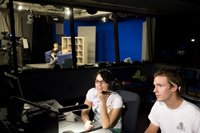 and we try and find what will appeal most,” Wilcox said. “And we know that students like videos and like different ways to get into stories so our collaboration has been trying to find new and interesting ways to present news.”
and we try and find what will appeal most,” Wilcox said. “And we know that students like videos and like different ways to get into stories so our collaboration has been trying to find new and interesting ways to present news.”
Dr. Mark Neuzil, COJO professor and interim Aquin adviser, said this transition period that communication and journalism students find themselves in may demand more work, but it will be worthwhile.
“It is harder now for the student because the skill set is larger. It’s not just being a good reporter and a good storyteller; now you have to be a technician and a photographer and a sound guy and a videographer,” Neuzil said. “But it’s an exciting time to be going into the business, that’s for sure, because you can define a lot of it yourself and kind of reinvent it if you want to. Now you can go in and say, ‘I can do this; do you guys want to have a podcast?’”
When Neuzil worked at his college newspaper, it was just starting to move from using typewriters to desktop computers, he said. Some three decades later, the media still are changing, but now the change requires journalists who can do it all.
“The ideal would be a student who can go to an employer and show up with a two-minute video, a 40-inch story, a 12-photo slideshow, a podcast and say ‘This is what I’ve got,’” Neuzil said. “And that is going to take awhile because how do you teach all that stuff? We already have so many required courses, so our challenge is how to fit it all in.”
The answer in part, Neuzil said, is to model students’ extracurricular media opportunities on the media profession.
“It’s important for us to give the students an experience that mirrors the experience they will have in a real job,” Neuzil said. “With The Aquin, that was the idea behind putting videos and slideshows on the Web page and so forth.”
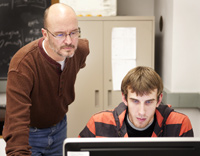 As the “Campus Scope” adviser since 1994, COJO Associate Professor Tim Scully has seen this transition coming for quite some time. He said students not only have to be aware of their own responsibilities as journalists in an evolving industry, but also need to be aware of the habits of the consumers of that information.
As the “Campus Scope” adviser since 1994, COJO Associate Professor Tim Scully has seen this transition coming for quite some time. He said students not only have to be aware of their own responsibilities as journalists in an evolving industry, but also need to be aware of the habits of the consumers of that information.
Scully said he remembers a time when he turned on the news at the same time every night on one of the three broadcast channels available, because he and everyone else knew that if they wanted the news, this was how they would get it.
“People have changed their habits,” Scully said. “Young people are no longer tied to a broadcast schedule, and they don’t watch [TV] news like their parents. If they want news they’ll go online.”
With so many options in television news, broadcasters have more competition for audiences, Scully said, and to keep that audience’s attention they must reach out with a multifaceted approach that calls for online media, broadcast media and print media.
“It has really been a gradual transition that is a combination of technology and economics that is driving us into this place,” Scully said. “As educators we have an obligation to turn out students who have multiple skills and who are adaptable to what happens next. We need good communicators who are familiar with technology but also are good storytellers.”
But Scully also said that developing those skills can’t be expected to happen in the classroom alone. Student organizations such as The Aquin and “Campus Scope” offer a chance for students to practice their craft.
Chris Hansen is an example. After working for “Campus Scope,” last fall he became an Aquin videographer and learned to work alongside print reporters to collaborate in creating a print story and a video report.
“It’s been fun to be exposed to a lot more people journalistically,” Hansen said. “I know video production, but working with print reporters and showing up on Tuesdays when the paper gets put together has shown me how different the two realms are and to appreciate the work that goes into it.”
Just as Hansen has learned from working with print, the reporters have had the opportunity to learn from him.
“I remember one time I was setting up lights and sound for an interview before the reporter showed up,” Hansen said. “When she got there she looked baffled and said, ‘What’s all this?’ I told her it was a pretty basic set, and she told me that she had no idea all that went into it.”
Little experiences like that reveal how important media collaboration is and how far there is to go, Hansen said.
